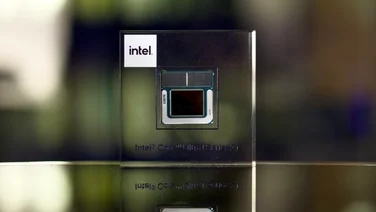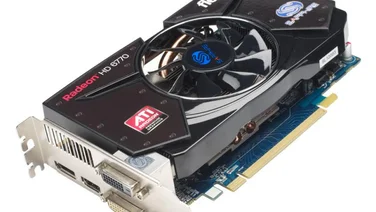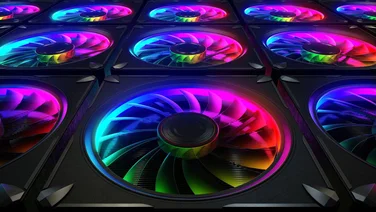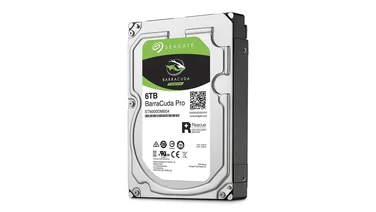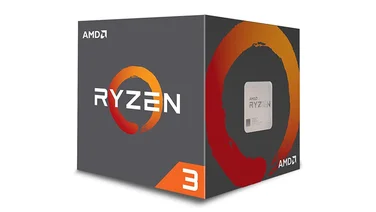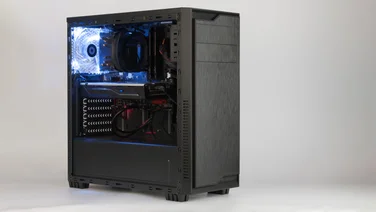To help us provide you with free impartial advice, we may earn a commission if you buy through links on our site. Learn more

It’s all too rare an occurrence than a product launch truly shakes up the PC hardware scene; generally, as long as a new component is stronger, faster or sleeker than whatever it replaces, that’s enough.
The 2017 launch of AMD’s Ryzen processors, on the other hand, changed things dramatically. After years and years of trying to catch up with a dominant (if increasingly complacent) Intel, AMD finally had a CPU lineup that could compete at the high-end and mid-range – Intel even borrowed Ryzen’s high core count/lower clock speed approach for its 8th-gen Coffee Lake range.
To be sure, the freshly-released second generation Ryzen chips have returned to a more iterative upgrade style, rather than being totally reinvented two years in a row. This new lineup also doesn’t completely replace the first generation, which numbers some dozen chips across the premium Ryzen 7, mid-range Ryzen 5 and budget Ryzen 3 families: to start with, there’s just the octa-core Ryzen 7 2700X and 2700, the hexa-core Ryzen 5 2600X and 2600 and the quad-core Ryzen 5 2400GE and Ryzen 2 2200GE.
AMD Ryzen 7 2700X review: Zen pusher
That makes the Ryzen 7 2700X AMD’s latest flagship processor, and thus brings with the full set of AMD’s updates. While the underlying Zen+ architecture is still in place, the manufacturing process has switched from 14nm to an even more efficient – in theory – 12nm, while clock speeds have been bumped up to 3.7GHz base and 4.3GHz boost clock (though the latter is measured in a slightly different way to previous Ryzen chips, as we’ll soon see).
READ NEXT: The best CPUs
There’s also a new motherboard chipset, X470, though the only notable advance here is the StoreMI feature; this can be used to group an SSD and hard disk together to act as a single drive, combining the speed of solid-state storage with the capacity of a mechanical HDD. The good news for existing Ryzen owners is that all the new chips – including the Ryzen 7 2700X – use the AM4 socket, and are therefore backwards-compatible with first generation chipsets like X370 and B350.
AMD Ryzen 7 2700X review: Home on the range

Part of the reason the boost clock speed seems so high (this chip’s predecessor, the Ryzen 7 1700X, came in at 3.4GHz base and 3.8GHz boost) is simply that AMD now lists Ryzen boost speeds inclusive of their maximum gains from Precision Boost and Extended Frequency Range (XFR) – which are back and upgraded for the second generation. Precision Boost, for starters, still dynamically raises core clock speeds when there’s thermal and voltage headroom to do so, but no longer imposes a lower clock speed on individual cores when two or more are in use. Without this leash, the Ryzen 7 2700X could potentially do even better in multithreaded workloads.
The new XFR is similar to Precision Boost in that it can adjust clock speeds by 25MHz steps, up to a maximum of 100MHz; it’s just become a bit better at responding to different types of CPU cooler. In other words, you’re more likely to see big XFR boosts with watercooling than with a basic air cooler.
On that note, the Ryzen 7 2700X comes with AMD’s RGB lighting-equipped Wraith Prism cooler, complete with pre-applied thermal paste. For first-time builders that’s an improvement on most of the old Ryzen 7 range, which didn’t come with coolers at all, through for the sake of fair testing we performed our benchmarks with the same Noctua NH-U12S air cooler we used for all our Ryzen reviews.
AMD Ryzen 7 2700X review: Strength in numbers
Regardless of how AMD advertises its boost clocks, the 2700X’s performance makes a much stronger statement. With our testing PC’s relatively modest 8GB of DDR4 RAM, it scored a high 149 in the image test and an even more impressive 226 in the video encoding test and 262 in the multitasking test. Overall, it scored 231 – so not only does it beat the Intel Core i7-8700K, but it even outpaces the first generation Ryzen 7 1800X, which was a step up from the 1700X itself.
Most excitingly, AMD has finally closed the gap on Intel for gaming performance. Historically, the Core range’s higher clock speeds have given it the advantage in games, including over Ryzen – but when paired with a powerful graphics card, the Ryzen 7 2700X keeps up with Coffee Lake. We used a 6GB Nvidia GeForce GTX 1060 – there’s no integrated graphics whatsoever – and got a suitably smooth 109fps in Dirt: Showdown running at 1,920×1,080 with Ultra quality settings. At 3,840×2,160, where we’d expect CPU power to make an even bigger difference, the 2700X/GTX 1060 combo produced 49fps – right on par with the Core i7-8700K.
AMD’s chip also matches Intel’s in the more demanding Metro: Last Light Redux, managing 48fps at 1,920x,1080. The GTX 1060 can’t handle Very High settings at 3,840×2,160, so for this resolution we lowered to Medium settings and disabled SSAA for an average of, again, 48fps – another great showing.
In short, the 2700X is an incredibly potent chip for media editing and CAD work – the most powerful mainstream CPU we’ve tested, in fact – and finally overcomes AMD’s gaming weakness, making itself a great choice for more leisurely pursuits as well. It’s clear that the decision to simply raise clock speeds was the right one. AMD has managed to do this without losing control on temperatures as well; idling, the air-cooled 2700X stuck around 27°c, and was pretty consistently around 60°c under sustained load. The absolutely highest temperature we recorded with 70°c, and only very, very briefly. That’s not as chilly as our current high-end CPU Best Buy, the Ryzen 7 1700, but absolutely fine nonetheless.
AMD Ryzen 7 2700X review: Silicon ceiling
Surprisingly, the clock speeds appear to have been set so aggressively that there isn’t much room left for overclocking – or that the very highest Precision Boost and XFR improvement only kick in very, very rarely. Our PC crashed when we tried running our benchmarks at a permanent 4.2GHz overclock, so the highest we could go while maintaining stability was 4.15GHz, 150MHz short of the listed maximum boost clock.

This still produced some very decent performance improvements: the image test score creeped up a few points to 155, while the video and multitasking test results saw bigger jumps to 242 and 284 respectively. The overall score ended up at 248, so it’s worth doing if you know how.
That said, overclocking is one area where Intel actually wins out: the Core i7-8700K, when running at 4.8GHz, can turn around its lower stock speed performance to achieve a massive 268 overall. It’s very possible that, with the improved watercooling response from XFR, you could get higher speeds and thus even better performance out of the 2700X if you used liquid cooling instead of air, but this chip isn’t a complete and total victory for AMD.
AMD Ryzen 7 2700X review: Keep your cool
Still, the upside of overclocking at or below the maximum boost clock is that you don’t need to upgrade your cooler. When set at 4.15GHz, the 2700X idled at 28°c, a single degree higher than at stock speeds, and even under load is still hovered around the 60°c mark. Somehow its peak temperature was even lower, at 67°c.
You won’t see as big an improvement in gaming performance as in more heavily multithread tasks when overclocking, and there no change at all in Metro: Last Light Redux at 1,080p; at 4K, only a single frame-per-second was gained. This was also true in Dirt: Showdown running at 4K, though at 1,080p, a bigger (though still very small) improvement did occur, with a final average of 113fps.
It’s also worth mentioning that power draw has increased from the 1700X, which was 95W, up to 105W on the 2700X. Despite the move to 12nm, then, the higher clock speeds do make this a slightly thirstier chip than the competition – though to be fair, 10W is peanuts for anyone building a PC with a dedicated graphics card in it
AMD Ryzen 7 2700X review: Verdict
As such, there’s almost nothing to dislike and an awful lot to love about the Ryzen 7 2700X. Even if the Core i7-8700K can go faster, that requires some intense overclocking that’s dependent on both a good watercooler and fine control over voltages; if you don’t want to pay for the former and don’t have the knowledge for the latter, then it’s good to know that the 2700X breezes past the Core i7-8700K at stock speeds, where air cooling is more than sufficient.
The killer blow, however, is the price. At £283, the 2700X is even cheaper than the Ryzen 7 1700 was at launch – never mind the 1700X or 1800X – and yes, you’re saving a bundle compared to the Core i7-8700K. For powerful new PC builds or even just upgrading from a first generation Ryzen chip, the 2700X takes its place as our CPU of choice.


